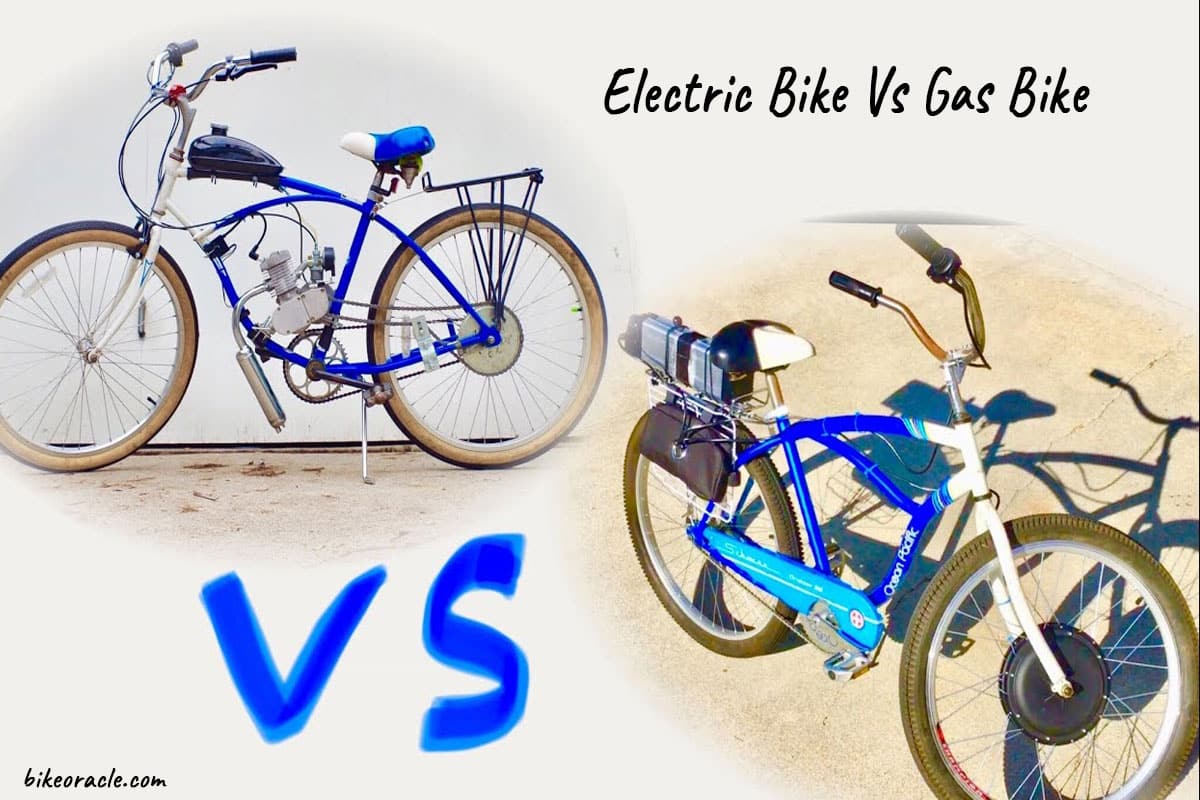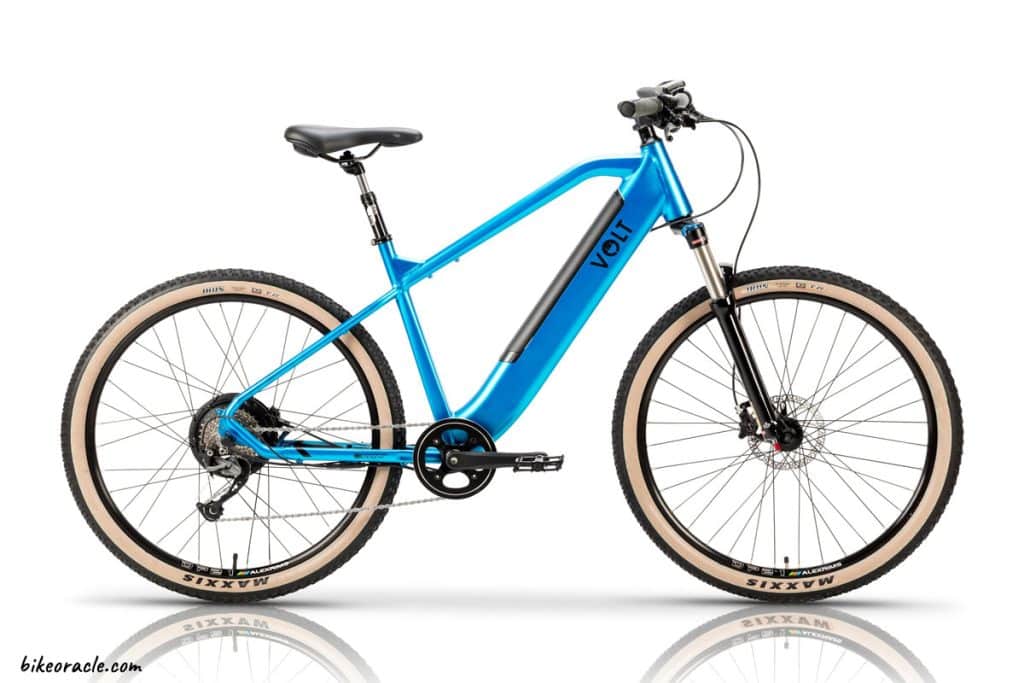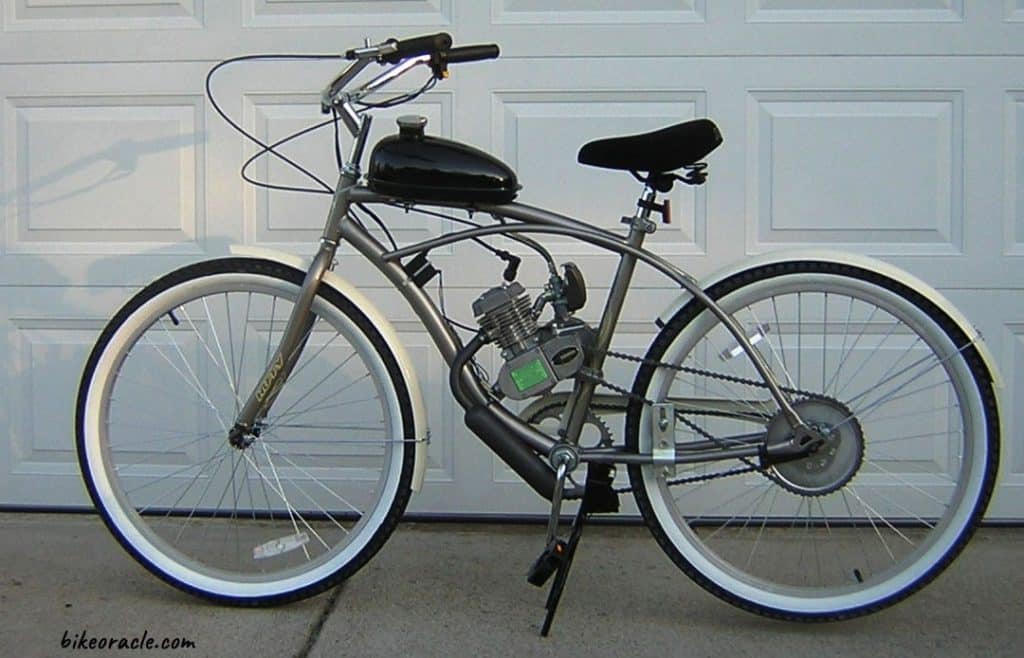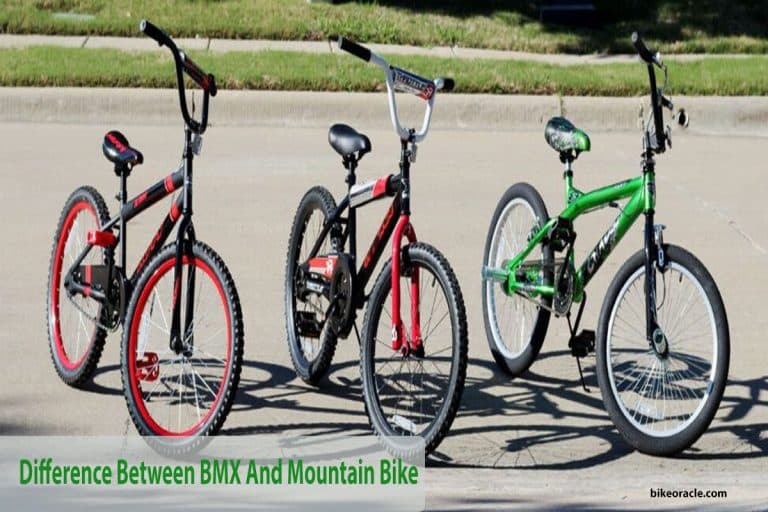Electric Bike Vs Gas Bike – Which One Is the Best?

In the realm of two-wheeled wonders, a battle unfolds between the electric bike and the gas bike, each vying for the throne of supremacy. Electric bikes have surged in popularity, drawing admirers with their eco-friendly nature and efficient performance. These silent warriors harness the power of technology to revolutionize the way we ride.
On the other hand, gas bikes, with their fiery engines and rich heritage, have cemented their status as legends in the realm of motorcycle enthusiasts. They roar with untamed power, ready to conquer the open road.
In this clash of titans, we embark on a quest to uncover the strengths and weaknesses of these rivals. We shall examine their performance, cost, environmental impact, and the very essence of the riding experience they offer. By delving into these realms, we shall unveil the champion that best suits the desires and needs of different riders in their unique quests.
Join us as we traverse the intricate landscapes of electric bikes and gas bikes, unraveling their secrets and revealing the ultimate victor in this captivating saga of two-wheeled marvels.
Understanding Electric Bikes – The Basics
Definition and components of an electric bike
Electric bikes, or e-bikes, combine a traditional bicycle with an electric motor and battery pack. The electric motor provides assistance, enabling riders to travel faster and with less effort. Key components include the motor, battery, controller, pedal-assist sensors, and display unit. Together, these elements create a harmonious blend of human and electric power, revolutionizing the cycling experience.
How electric bikes work
With electric bikes, a harmonious dance unfolds between human power and electric assistance. As the rider initiates the rhythmic act of pedaling, a symphony of sensors awakens, sensing the motion and whispering to the controller. In response, the electric motor gracefully joins the performance, infusing the bike with an extra surge of power.
The result? Effortlessly gliding forward, the rider’s exertion diminishes as the motor lends its energy. It’s a captivating partnership where the boundaries of human capability are pushed, the fusion of man and machine harmoniously propelling the bike into a new era of transportation.
Benefits of electric bikes
Environmentally friendly transportation
Electric bikes: silent emissaries of change, gracefully gliding while reducing carbon emissions. With their electric motors, they offer a greener alternative, combating air pollution and climate change. Each pedal stroke becomes a small but mighty revolution, propelling us towards a cleaner and healthier future.
Cost savings on fuel and maintenance
Compared to conventional vehicles, electric bikes offer significant cost savings. They can be charged using electricity, which is generally more affordable than fuel, resulting in lower operating costs. Additionally, maintenance expenses are usually lower since electric bikes have fewer complex components and require less frequent servicing.
Health and fitness benefits
While electric bikes provide electric assistance, they still encourage physical activity. Riders can handpick the level of support they want, allowing them to train at their chosen intenseness. E-bikes are especially helpful for people with limited physical abilities or who get it difficult to catch up in aggressive physical activities. They allow folks to groove (on) the advantage of cycling, such as cardio, without overexertion.
Ease of use and accessibility
Electric bicycles are intended to be easy to use and easily available to many people. The electric engine gives extra support, making it simpler to handle slants, ride longer distances, and convey heavier weights. This availability advances bicycle driving and urges more individuals to embrace dynamic transportation, even the people who might have recently been hindered by physical limits or the need to show up at their goal without feeling exhausted.
By adjoining the comfort of electric support with the wellbeing and ecological advantages of cycling, electric bicycles offer a convincing transportation choice for many types of people.
Understanding Gas Bikes – The Basics
Definition and components of a gas bike
At the point when we discuss gas bicycles, we are alluding to cruisers or bikes that are controlled by gas powered motors filled by gas. These bicycles comprise of a few key parts, including a motor, gas tank, carburetor or fuel infusion framework, fumes framework, transmission, and different other mechanical parts.
How gas bikes work
Gas bikes operate on the principle of internal combustion. The motor, normally a two-stroke or four-phase motor, blends fuel (gas) with air in the carburetor or fuel infusion framework. This blend is then packed inside the motor’s chamber and lighted by a flash fitting. The resulting explosion creates the force that drives the piston, which ultimately powers the bike’s wheels through the transmission system.
Benefits of gas bikes
Powerful and high-speed performance
One of the notable advantages of gas bikes is their ability to deliver powerful performance and high speeds. Gas engines generate significant horsepower and torque, allowing riders to experience thrilling acceleration and achieve impressive top speeds. This makes gas bikes suitable for those seeking an exhilarating riding experience.
Long-distance travel capabilities
Gas bikes excel when it comes to long-distance travel. Not at all like electric bicycles that depend on battery power, gas bicycles can cover broad distances without the requirement for re-energizing. With a full tank of fuel, riders can set out on expanded journeys without stressing over running out of energy. This makes gas bikes a preferred choice for touring or adventure enthusiasts who crave exploration on the open road.
The wide availability of gas stations
One of the conveniences of owning a gas bike is the widespread availability of gas stations. Gasoline is a widely accessible fuel source, and gas stations are abundant, making it easy to refuel while on the go. This allows riders to venture into remote areas without concern for finding a charging station or running out of power.
Established infrastructure and support
Gas bikes benefit from a well-established infrastructure and support network. The automotive industry has been built around gasoline-powered vehicles for decades, resulting in a robust network of mechanics, spare parts suppliers, and knowledgeable professionals who can provide maintenance, repairs, and technical support for gas bikes. This infrastructure ensures that gas bike owners have easy access to services and expertise whenever needed.
Electric Bike Vs Gas Bike – Performance and Speed
Electric bike performance
Motor power and torque:
Electric bikes are equipped with powerful electric motors that deliver impressive power and torque. The electric motor’s wattage rating determines its power output, and higher wattage generally translates to more robust performance. Electric bikes commonly feature motors in the range of 500 to 750 watts, providing ample power for acceleration and uphill climbs. Torque, which is the rotational force generated by the motor, contributes to the bike’s ability to handle various terrains and carry heavier loads.
Acceleration and top speed:
Electric bikes offer quick acceleration thanks to the instant torque delivery of electric motors. Riders can experience swift take-offs and seamless transitions to higher speeds. The top speed of an electric bike depends on factors such as motor power, bike weight, and local regulations. Many electric bikes can reach speeds of 20 to 28 mph, providing efficient and enjoyable commuting or recreational experiences.
Battery range and charging time:
The range of an electric bike refers to the distance it can travel on a single battery charge. Electric bikes typically have different modes, such as pedal-assist and full-electric modes, which can affect the range.
The battery capacity, measured in watt-hours (Wh), influences the bike’s range. Higher-capacity batteries generally offer longer ranges. Charging time varies depending on the battery capacity and charger specifications. It takes a few hours to fully recharge an electric bike’s battery.
Gas bike performance
Engine capacity and horsepower:
Gas bikes rely on internal combustion engines with varying engine capacities. Engine limit is estimated in cubic centimeters (cc) and influences the power yield. Gas bicycles can have motor limits going from little uprooting motors to huge relocation motors with high drive evaluations. Higher motor limit by and large relates to expanded torque, taking into consideration quicker speed increase and higher maximum velocities.
Acceleration and top speed:
Gas bikes can provide exhilarating acceleration, especially models equipped with high-performance engines. The engine’s power output, weight of the bike, and the transmission system contribute to acceleration capabilities. Gas bikes are capable of reaching impressive top speeds, with some models exceeding 100 mph, depending on the engine size and design.
Fuel efficiency and tank capacity:
Gas bicycles have shifting degrees of eco-friendliness relying upon the motor size, riding conditions, and riding style. Eco-friendliness is regularly estimated in miles per gallon (mpg). Gas bicycles frequently have bigger gas tanks contrasted with electric bicycles, taking into account longer rides prior to refueling is important. Tank limits can shift from a couple of gallons to a few gallons, empowering riders to cover significant distances prior to expecting to top off.
Electric Bike Vs Gas Bike – Cost Comparison
Electric bike costs:
- Initial purchase price:
The underlying price tag of electric bicycle shifts relying upon the brand, model, and highlights. By and large, a fair electric bicycle can cost anyplace between $1,000 to $5,000.
- Maintenance and repairs:
Electric bikes generally have lower maintenance and repair costs compared to gas bikes. They have fewer moving parts and don’t require regular oil changes or tune-ups. Upkeeping commonly includes checking and keeping up with the battery, engine, brakes, and tires. Expenses might shift, yet all things considered, upkeep costs for an electric bicycle can go from $100 to $300 each year.
- Battery replacement costs:
The battery is a significant part of an electric bicycle and will ultimately require substitution after a specific number of charge cycles. Battery substitution expenses can change contingent upon the kind and limit of the battery. All things considered, an electric bicycle battery substitution can cost between $300 to $800.
Gas bike costs:
- Initial purchase price:
Gas-powered motorcycles or scooters vary significantly in price depending on the brand, model, engine capacity, and additional features. On average, a gas bike can cost anywhere from $2,000 to $10,000 or more.
- Fuel expenses:
Gas bicycles require standard powering, and the costs can accumulate over the long haul. The fuel utilization relies upon the motor size and riding style, yet by and large, gas bicycles can accomplish around 40-60 miles for every gallon. Fuel costs change by area, however a gauge for fuel costs can go from $500 to $1,500 each year, contingent upon use.
- Maintenance and repairs:
Gas bikes generally require more frequent maintenance and repairs compared to electric bikes. This incorporates oil changes, channel substitutions, flash attachment substitutions, and occasional checkups. The support expenses can shift contingent upon the bicycle’s image, model, and utilization, yet by and large, upkeep costs for a gas bicycle can go from $300 to $600 each year.
Here’s a summarized cost comparison table:
| Cost Category | Electric Bike | Gas Bike |
| Initial purchase price | $1,000 – $5,000 | $2,000 – $10,000 |
| Maintenance and repairs | $100 – $300 per year | $300 – $600 per year |
| Battery replacement costs | $300 – $800 | N/A |
| Fuel expenses | N/A | $500 – $1,500 per year |
Environmental Impact
Electric bike emissions
Zero tailpipe emissions:
One of the major advantages of electric bikes is their zero tailpipe emissions. Unlike gas bikes, which emit harmful gases into the atmosphere, electric bikes produce no direct emissions during operation. This means that riding an electric bike contributes significantly to reducing air pollution and improving air quality in urban areas.
Reduction of air pollution:
Gas bicycles transmit toxins like nitrogen oxides (NOx) and particulate matter (PM), which unfavorably affect human wellbeing and the climate. Electric bicycles, then again, have no exhaust outflows, bringing about cleaner and better air for everybody.
Contribution to sustainability:
Electric bicycles assume a crucial part in advancing maintainability. They work on battery-powered batteries that can be fueled by environmentally friendly power sources. By choosing electric bicycles, people support the progress to a feasible transportation framework, lessening dependence on petroleum derivatives and moderating the natural effect of transportation.
Gas bike emissions
Greenhouse gas emissions:
Gas bicycles are known to emanate ozone-depleting substances (GHGs), principally carbon dioxide (CO2), during their activity. These emanations add to the developing worries of environmental change and an Earth-wide temperature boost. The burning of petroleum products in gas bicycles discharges CO2, a significant supporter of the nursery impact and the exhaustion of the ozone layer.
Air pollution concerns:
Notwithstanding GHG discharges, gas bicycles discharge contaminations out of sight, prompting air contamination. These poisons incorporate nitrogen oxides (NOx), carbon monoxide (CO), and hydrocarbons, which are hurtful to human well-being and can have serious ecological results. The aggregation of these contaminations in metropolitan regions adds to exhaust cloud development and respiratory issues.
Impact on climate change:
The utilization of gas bicycles essentially affects environmental change. The emanations created by these bicycles add to the rising grouping of ozone-depleting substances in the air, prompting climbing worldwide temperatures and related natural issues. Subsequently, the decision of transportation, for example, electric bicycles, assumes a critical part in limiting the adverse consequences of environmental change.
By choosing electric bicycles, people can effectively add to lessening air contamination, advancing supportability, and moderating the hurtful impacts of gas bicycle emanations on both human well-being and the climate.
Range and Charging/Refueling
Electric bike range
Factors affecting range:
The range of an electric bike can be influenced by several factors, including:
Rider weight: Heavier riders may experience a slightly reduced range compared to lighter riders.
Terrain: Riding uphill or on rough terrain can decrease the range due to increased energy consumption.
Speed: Riding at higher speeds typically consumes more battery power, reducing the overall range.
Assist level: Utilizing higher assist levels or throttle mode more frequently can result in a shorter range.
Wind resistance: Strong headwinds can increase energy consumption and decrease the range.
Battery capacity and technology: The battery capacity and technology play a crucial role in determining the electric bike’s range. Models with higher-limit batteries for the most part offer a more drawn out range. Moreover, headways in battery innovation, like lithium-particle batteries, have worked on the general reach and effectiveness of electric bicycles.
Charging options and time: Electric bicycles commonly accompany different charging choices, including connecting to a standard power plug or utilizing a committed charging station. The charging time can change contingent upon the battery limit and the charging technique utilized. By and large, it might require around 4-6 hours to completely charge an electric bicycle’s battery, however this can change between models.
Gas bike range
Fuel capacity and efficiency:
Gas-powered bikes rely on fuel capacity and efficiency to determine their range. The gas tank size changes between models, however for the most part, bigger tanks can hold more fuel, bringing about a more extended territory. The proficiency of the motor and its fuel utilization rate likewise influence the reach. Bikes with more fuel-efficient engines can travel further on the same amount of fuel.
Refueling options and time:
Gas bicycles require refueling at service stations, like conventional autos. The refueling time relies upon the gas tank size and the stream pace of the service station. For the most part, all that’s needed is a couple of moments to refuel a gas bicycle, permitting riders to continue their excursions rapidly.
Maintenance and Reliability
Electric bike maintenance
Battery maintenance:
The maintenance of the electric bike’s battery is crucial for its optimal performance. Here are some key points to consider:
- Regular charging: It is important to charge the battery regularly, following the manufacturer’s recommendations. This helps maintain its overall health and prevents capacity degradation.
- Proper storage: When not in use, store the electric bike and its battery in a cool, dry place to avoid extreme temperature fluctuations.
- Cleaning and inspection: Periodically clean the battery terminals and check for any signs of corrosion or damage. If any issues are detected, consult the manufacturer or a professional for further assistance.
Motor and drivetrain maintenance:
To ensure the longevity and smooth operation of the electric bike’s motor and drivetrain, here are some maintenance tips:
- Lubrication: Apply appropriate lubricants to the chain, gears, and other moving parts as recommended by the manufacturer. This helps reduce friction and prolong the life of these components.
- Regular inspection: Check the motor and drivetrain components for any signs of wear or damage. Replace worn-out parts promptly to prevent further issues.
- Keep it clean: Regularly clean the motor and drivetrain area, removing any dirt, debris, or excess lubricants. This helps maintain optimal performance and prevents premature wear.
Common issues and repairs:
While electric bikes are generally reliable, there are some common issues that may arise. Here are a few examples:
- Brake adjustments: Over time, the brakes may require adjustments to maintain proper stopping power. Regularly check the brake pads and adjust them as needed.
- Tire maintenance: Inspect the tires for wear and tear, and ensure they are properly inflated. Replace worn-out tires and tubes promptly to ensure safe and efficient riding.
- Electrical system checks: Periodically inspect the wiring and connectors for any loose or damaged parts. If you encounter electrical issues, consult a professional for repair.
Gas bike maintenance
Engine maintenance:
Proper maintenance of the gas bike’s engine is essential for its reliability and performance. Here are some maintenance tasks to consider:
- Oil changes: Regularly change the engine oil as per the manufacturer’s recommendations. Clean oil helps lubricate the engine and prevent excessive wear.
- Air filter cleaning/replacement: Clean or replace the air filter regularly to ensure proper air intake and combustion efficiency.
- Spark plug inspection/replacement: Inspect the spark plug periodically and replace it if necessary. A worn-out spark plug can affect engine performance.
Fuel system maintenance:
To keep the gas bike’s fuel system in good condition, follow these maintenance guidelines:
- Fuel quality: Use clean, high-quality fuel and avoid storing it for extended periods to prevent fuel degradation.
- Fuel filter maintenance: Regularly clean or replace the fuel filter to prevent clogging and ensure proper fuel flow.
- Carburetor adjustments: Periodically check and adjust the carburetor settings for optimal fuel-air mixture and engine performance.
Common issues and repairs:
Gas bikes may encounter specific issues that require attention. Here are a few common examples:
- Carburetor cleaning: Over time, the carburetor may become clogged with dirt or debris, leading to poor engine performance. Cleaning or rebuilding the carburetor can resolve such issues.
- Ignition system problems: Faulty ignition components can cause starting or performance issues. Regularly inspect the ignition system and replace any faulty parts.
- Exhaust system maintenance: Check the exhaust system for leaks or blockages. Repair or replace damaged components to maintain proper exhaust flow.
Remember, proper maintenance and timely repairs are crucial for both electric and gas bikes to ensure their longevity, reliability, and optimal performance.
Frequently Asked Questions(FAQs)
Are electric bikes more environmentally friendly?
Yes, electric bikes produce zero emissions and contribute to reduced air and noise pollution.
Which bike offers better cost savings?
Electric bikes. They have lower operational costs, require less maintenance, and rely on cheaper electricity.
How do electric bikes perform compared to gas bikes?
Electric bikes offer quick acceleration and smooth power delivery, while gas bikes may have higher top speeds and longer ranges.
What are the advantages of electric bikes?
Eco-friendly, quieter operation, cost savings, and convenient charging at home.
Are there advantages to choosing gas bikes?
Longer range, higher top speeds, and greater availability of gasoline infrastructure in some areas.
Conclusion
Eventually, there is no authoritative “best” decision between electric and gas bicycles. Each type has its own assets and benefits, and the choice ought to be founded on individual inclinations and necessities. Electric bicycles give eco-accommodating and helpful choices for metropolitan driving, sporting riding, and sure rough terrain experiences.
Gas bicycles, then again, offer more power and reach, making them reasonable for really long rides and explicit open-air exercises. To settle on the most ideal choice, it is critical to consider factors, for example, wanted riding experience, territory conditions, financial plan, support necessities, and natural effect.
By cautiously assessing these elements and understanding one’s very own inclinations, it is feasible to find the most appropriate bicycle that lines up with individual requirements and gives a pleasant riding experience.




![Is Mongoose a Good Bike Brand? [Answered]](https://bikeoracle.com/wp-content/uploads/2023/09/Is-Mongoose-a-Good-Bike-Brand-768x512.jpg)
![How Fast Can a 36V Electric Bike Go? [Answered]](https://bikeoracle.com/wp-content/uploads/2023/10/How-Fast-Can-a-36V-Electric-Bike-Go-768x512.jpg)

